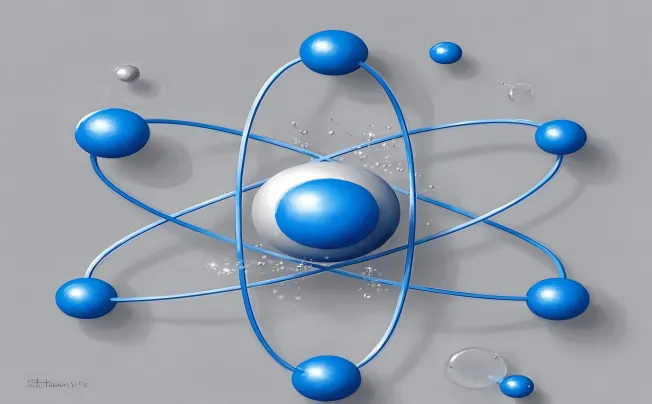What Is The Difference Between Ferro Silicon And Silicon Metal?
Ferro Silicon and Silicon Metal, two pivotal materials derived from the same elemental foundation, serve vastly different roles in industrial applications.
The Composition and Production Process
Ferro Silicon
Ferro Silicon is a crucial alloy consisting of iron and silicon, with varying silicon content typically ranging from 15% to 90%. The composition is carefully controlled to meet the specific requirements of different industrial applications. This alloy is primarily used in the steel industry for its deoxidation and desulfurization properties.
The production process of Ferro Silicon involves the reduction of quartz (silica) with coke in submerged arc furnaces. This method ensures the efficient conversion of raw materials into the desired alloy by utilizing high temperatures and controlled environments.
The reduction of quartz with coke leads to the extraction of silicon, which reacts with iron to form Ferro Silicon. Using submerged arc furnaces allows for precise temperature control during the production process, ensuring consistent quality and composition.
The resulting Ferro Silicon alloy plays a vital role in enhancing the properties of steel, such as improving its strength and resistance to corrosion. Its versatility makes it a sought-after material in various industrial sectors due to its cost-effectiveness and performance benefits.
Ferro Silicon's production process requires expertise and adherence to strict quality standards to meet the diverse needs of industries relying on this essential alloy. The continuous advancements in technology have further refined manufacturing methods, leading to greater efficiency and sustainability in producing Ferro Silicon for global markets.
Silicon Metal
Silicon Metal stands out as a high-purity elemental silicon material, typically containing over 98% pure silicon content. This exceptional purity level makes it a preferred choice for applications requiring precise electronic properties or stringent quality standards. The production process of Silicon Metal involves carbothermic reduction, where silica is reduced using carbon sources like coal or charcoal in electric arc furnaces.
The carbothermic reduction process relies on high temperatures generated by electric arcs within specialized furnaces to transform silica into pure elemental silicon metal. This method ensures minimal impurities are introduced during production, maintaining the high purity levels required for various industrial applications.
Silicon Metal finds extensive use in electronics manufacturing due to its excellent semiconductor properties and thermoelectric characteristics. The intricate production process involved in creating Silicon Metal demands careful control over factors like temperature, reaction kinetics, and raw material quality to achieve the desired purity levels essential for electronic applications.
The Physical Properties of Ferro Silicon and Silicon Metal
Ferro Silicon
Ferro Silicon is known for its distinct physical properties that make it a valuable material in various industries. In terms of density, Ferro Silicon typically has a density ranging from 6.7 to 7.2 g/cm³, depending on the silicon content. This higher density compared to pure silicon metal is due to the presence of iron in the alloy.
Additionally, Ferro Silicon exhibits significant hardness, with a Mohs hardness ranging from 6 to 8. This hardness contributes to its durability and resistance to wear and corrosion in industrial applications.
Moreover, Ferro Silicon displays brittleness characteristics, making it prone to fracturing under stress or pressure. This brittleness is a crucial factor considered in its handling and processing during manufacturing processes.
In terms of its melting point range, Ferro Silicon typically melts between 1200°C to 1400°C, allowing for easy casting and shaping when molten. Furthermore, the thermal conductivity of Ferro Silicon is relatively high compared to other materials, facilitating efficient heat transfer in applications such as steelmaking and foundry processes.
Silicon Metal
Silicon Metal, on the other hand, possesses unique physical properties that distinguish it from Ferro Silicon. One notable characteristic of silicon metal is its high melting point, which ranges around 1414°C (2577°F).
This high melting point makes silicon metal suitable for use in high-temperature applications where thermal stability is crucial. Despite its high melting point, silicon metal exhibits low density compared to many metals like iron or copper.
With a density of approximately 2.33 g/cm³, silicon metal offers lightweight properties desirable in the aerospace and automotive industries. Interestingly, silicon metal displays an excellent thermal conductivity property that enables efficient heat dissipation in electronic devices and power systems.
However, one intriguing aspect of silicon metal is its brittle nature at room temperature due to its crystalline structure. When heated above a certain temperature threshold (~1000°C), silicon metal transitions from being brittle to ductile—showing flexibility without breaking easily under mechanical strain.
Applications in Industries
Ferro Silicon: The Backbone of Metal Manufacturing
Ferro Silicon plays a pivotal role in the steel industry, primarily contributing to the processes of deoxidation, desulfurization, and alloying. During the steel-making procedure, oxygen is often trapped within molten iron, leading to undesirable effects such as brittleness and poor mechanical properties. Ferro Silicon serves as an effective deoxidizer; when added to molten steel, it reacts with dissolved oxygen to form silicon dioxide (SiO₂), which is subsequently removed as slag. This vital step not only enhances the quality of the steel but also optimizes its structural integrity and durability.
In addition to deoxidation, Ferro Silicon is employed for desulfurization—another crucial process in steel production.
Sulfur impurities can lead to significant deterioration in mechanical properties and corrosion resistance. By integrating Ferro Silicon into the liquid metal mix, sulfur binds with silicon to form ferrosilicon sulfide compounds that are easily removed. This process yields cleaner steel with improved tensile strength and enhanced resistance against fracturing under stress.
Moreover, Ferro Silicon acts as a critical alloying agent in producing specialty steels and cast irons that require specific characteristics.
By varying its chemical composition—particularly its silicon content—manufacturers can tailor mechanical properties like hardness or wear resistance according to desired specifications. In foundries, this adaptability allows for customized formulations that improve cast iron properties drastically; for instance, adding Ferro Silicon increases fluidity during casting processes while enhancing overall durability.
Silicon Metal: Powering Technology's Future
Silicon Metal has become indispensable within the rapidly evolving electronics industry where it serves as a foundational material for semiconductors—a cornerstone of modern technology. With its high purity (>98%), silicon metal is ideal for manufacturing integrated circuits (ICs) that power a myriad of devices from smartphones to computers.
As electronic components continue shrinking while performance demands escalate, high-purity silicon offers excellent charge carrier mobility which translates into faster processing speeds and improved energy efficiency. In recent years, solar energy technology has proliferated dramatically due to growing environmental concerns and advances in renewable energy solutions.
Here again, silicon metal shines brightly; it forms the core material used in photovoltaic cells which convert sunlight into electrical energy through semiconductor junctions made predominantly from crystalline silicon. Given its abundance and superior efficiency at converting solar radiation into electricity compared to other materials like cadmium telluride or thin-film technologies, silicon remains integral as we strive toward global sustainability goals.
Beyond electronics and renewable energy technologies lies another vital application: the chemical industry utilizes silicon metal extensively for producing silicone compounds—a class of materials renowned for their versatility across numerous applications such as sealants, adhesives, lubricants, and even medical devices. These silicone derivatives exhibit remarkable thermal stability coupled with excellent resistance against moisture and chemicals; thus they are favored choices across industries ranging from automotive manufacturing to construction sectors seeking robust solutions that withstand diverse environmental conditions.








